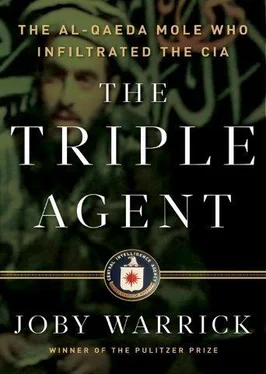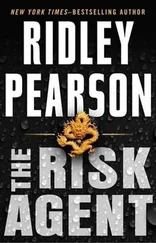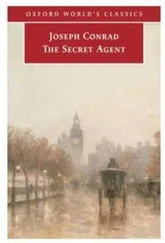But Panetta had even bigger things on his mind as he climbed into his limousine for Hanson’s graveside service. All morning his aides had been calling about a possibly momentous discovery, something unexpected that had emerged from the day’s trolling for terrorist suspects. The picture from the Pakistani tribal belt was still coming into focus, but the agency’s targeters believed they had located an al-Qaeda operative they had been seeking for a long time.
It was Sheikh Saeed al-Masri, the No. 3 terrorist commander and the man who had presided over Humam al-Balawi’s suicide attack at Khost.
Panetta, still exhausted from his overnight flight, snapped to attention. He flung questions at the counterterrorism chief. What do we know? How did we find him? How certain are you?
The reply from Langley: Not certain enough. Not yet .
From his car, Panetta thought through the possible implications. Sheikh Saeed al-Masri—if that was who it was—would be one of the important terrorist figures ever to fall into the CIA’s sights. At the moment he was the most prominent al-Qaeda operative after Osama bin Laden and Ayman al-Zawahiri. As a practical matter, he was more influential than either one of them.
As the big black car rolled into Arlington National Cemetery for Hanson’s burial, the CIA’s robot planes were prowling the sky over a house outside Miranshah, waiting. What an amazing ending to a truly awful chapter in the agency’s history, Panetta thought.
But was it really the sheikh?
Panetta phoned the White House to relay the latest information to Rahm Emanuel, the president’s chief of staff.
“It’s not a ‘go’ mission yet,” he said.
The questioning started before the dust had even settled at Khost. How could it have happened?
Surviving officers in Khost relayed the known facts within hours of the explosion, and the base’s Special Forces team prepared its own separate report summing up what was immediately obvious. A CIA double agent—in fact a triple agent—had managed to gain access to the agency’s secure base with an extraordinarily powerful bomb strapped to his body. He was able to come within a few dozen feet of a group of sixteen intelligence operatives before blowing himself up. Immediate intervention by experienced battlefield medics and surgeons had saved lives, but ten people had been killed, including the bomber and the CIA-trained Afghan driver.
The hard questions would take longer to sort out. Panetta’s senior staff focused on the key decisions and began tracing the steps backward, from Khost to Kabul and Amman and, inevitably, Langley. Panetta shared what he knew with White House advisers, including White House Chief of Staff Rahm Emanuel and National Security Adviser James L. Jones. Both he and Steve Kappes recounted the details in closed-door sessions with the Senate and House intelligence committees. Lawmakers had been sympathetic but also distracted by the near disaster that had occurred in the skies over Detroit on Christmas Day. Thus there would be no formal congressional inquiry into the events.
Panetta, with the White House’s blessing, decided to launch two investigations of his own. One was a task force of veteran CIA officers experienced in counterterrorism and counterintelligence. A second, independent review was led by a pair of longtime Washington hands known and respected within the intelligence community, former United Nations ambassador Thomas Pickering and Charles E. Allen, a former CIA manager who had served as intelligence chief for the Department of Homeland Security during the second Bush administration. The two teams would examine thousands of secret cables, memos, and e-mails, and interview surviving CIA officers as well as their coworkers and superiors, from Khost to Kabul, Islamabad, Amman, and Langley.
Nearly a year passed before the teams’ reports were completed. In the intervening months scores of former intelligence operatives and terrorism experts offered their own judgments, drawing from the scant details available. In op-ed pieces, news articles, and blogs, commentators focused on two perceived failures, missteps that were said to have contributed to the disaster at Khost while pointing to deeper flaws in the country’s premier intelligence agency. Several of the agency’s retired executives pinned the blame on Khost base chief Jennifer Matthews and, more broadly, the CIA managers in Langley who had approved her promotion to a frontline post despite her lack of experience in a war zone. Other observers argued that the fatal errors in judgment at Khost stemmed from the agency’s growing aversion to risk. Even in Iraq and Afghanistan, these critics noted, many CIA officers lived in secure compounds where no one ever got hurt, while relying on technology and foreign allies to do the dirty work of finding and destroying terrorist threats. Somewhere along the way, basic rules of spycraft, including time-honored procedures for assessing and running informants and double agents, had been all but forgotten.
The criticisms hit at legitimate problems within the CIA. But they did not fully capture what had gone wrong at Khost in the hours before New Year’s Eve.
The agency’s Khost review did confirm numerous missteps. It concluded that Jennifer Matthews and her Khost team—with the support of more senior officials at Kabul and Langley—failed to follow standard safety procedures in their meeting with Balawi, apparently out of an eagerness to secure the informant’s cooperation. Warnings that might have alerted the CIA to Balawi’s deception were never passed along, in part because the messages weren’t entirely trusted, investigators concluded. Critical insights were not shared with decision makers because they were expressed in private e-mails and text messages that never became part of the agency’s reservoir of knowledge about Humam al-Balawi. At the same time, expectations were raised in high-level meetings in Washington before key facts were known.
As a result, both Matthews and senior managers at Langley believed that Balawi was a trusted Jordanian agent, investigators found, and the cautions raised by those who knew him best—Ali bin Zeid and Darren LaBonte—were trumped by the “evidence” the officers could see with their own eyes: the words and images Balawi e-mailed from inside al-Qaeda’s tent.
“All they had seen and read, plus the urgency of getting to the top leadership of al-Qaeda, led to a situation in which the major preoccupation was the good health and safety of the man who was intent on becoming a suicide bomber,” said Ambassador Thomas Pickering, coleader of the independent review.
The agency’s investigators recommended significant reforms, several of which were quickly implemented by Panetta and his team. The agency raised its standards for training and experience for overseas managers, even though the investigators concluded that inexperience was not a decisive factor at Khost. CIA officials also tightened security procedures for their overseas bases and established a system of “red teams” to probe the agency’s defenses as an enemy would do, as well as internal reviews to guard against double agents and spies.
No single person or failure caused the disaster at Khost, the investigators found. Yet just as had happened before the September 11 terrorist attacks, managers at every level were blinded to warnings and problems that would seem screamingly obvious in hindsight.
After September 11 a bipartisan commission sought to distill in a single report why so many government departments had failed to prevent al-Qaeda’s plot to turn commercial jets into missiles against the Pentagon and the World Trade Center. The 9/11 Commission identified scores of tactical mistakes by the CIA, the FBI, and others, but it said the larger lapse was the agencies’ inability to conceive of the inconceivable.
Читать дальше












